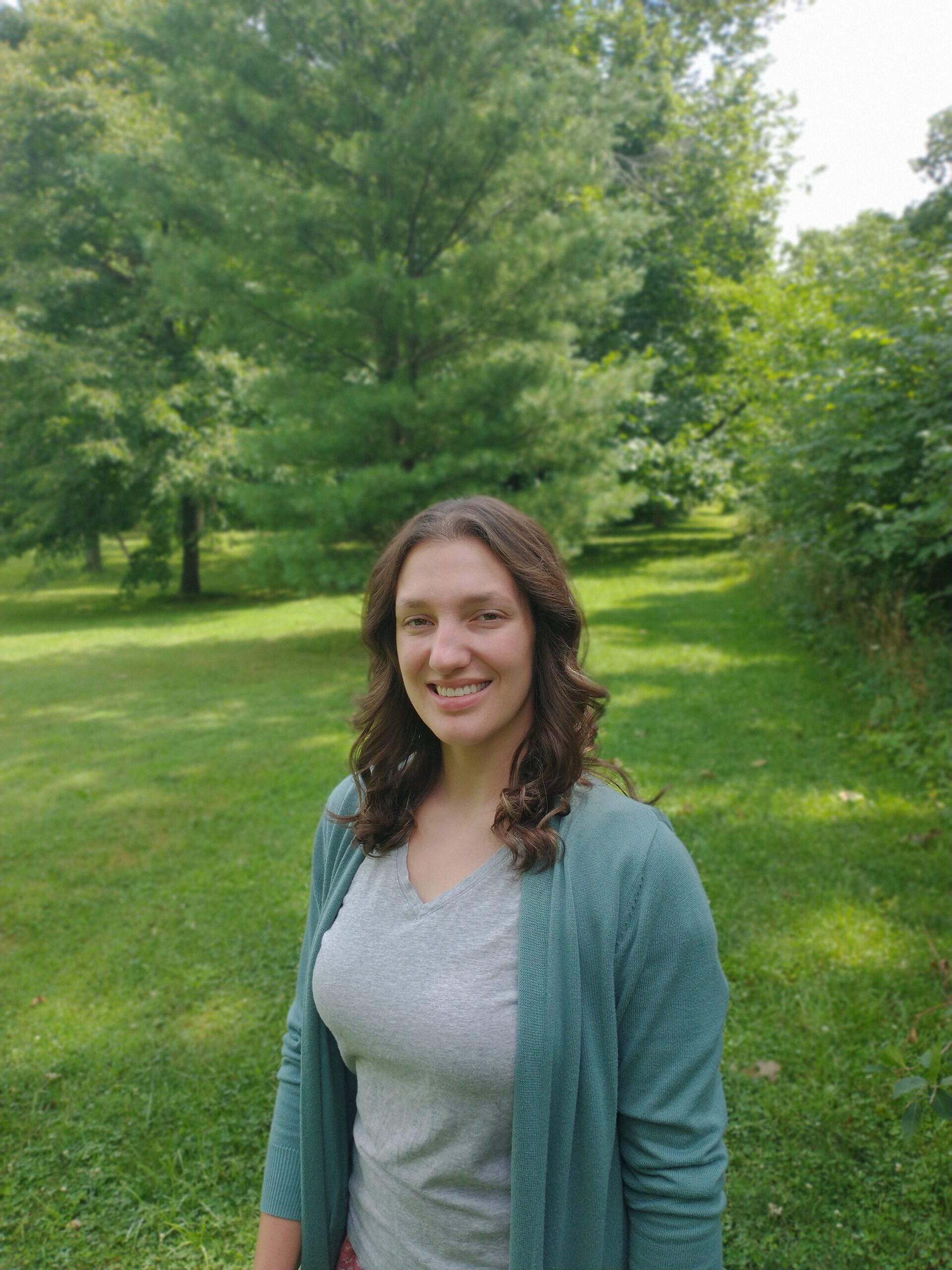Meet the author!
My name is Dr. Jaime “Stack” Applegate & I’m the owner, founder, & a practicing physical therapist at Inside Track Physical Therapy & Wellness. I’ve worked with the active population my whole life because I’m an active person! I played volleyball & basketball through high school & at Goshen College & was part of physical therapy a few times due to injury during that time which is what piqued my interest in the profession. Because of the experienced care I received in my own physical therapy rehabilitation, I decided to go into the profession so I could provide that to my patients. I work with runners, walkers, volleyball players, soccer players, swimmers, golfers, CrossFit athletes, & more to return them & improve their performance to a high level. I’ve helped active people & athletes return to fully participating in their sport, stay off regular pain medication use, sleep through the night, & maintain as well as return them to their previous fitness & strength levels after injury. Sometimes patients feel stronger & better than they did before the injury. I love my job because it’s exciting to celebrate growth & progress with such motivated & energetic people. I hope the information in this blog helps keep you on the field, court, course, or in the pool so you can continue to live your life pain free!
You Can Start Getting Better TODAY!
Low back pain in athletes is quite prevalent and it has been suggested that up to 30% of athletes (1) and up to 85% of the general population in their lifetime (3) will experience low back pain. This can be caused by something as simple as back muscle tension and as complex as a combination of conditions including fracture, disc herniation, and psychological causes. Many people believe that low back pain is a normal part of life because it is so prevalent in society. And why wouldn’t you?! If 85% of the general population experiences back pain at some point in their life that means more than 8 in 10 people we know have or will experience back pain! I’m here to tell you, don’t have to suffer long term and it IS NOT normal to do so.
The spinal column is a complex and central part of the body. It is made up of 27 bones including vertebrae, sacrum, and 2 hip bones, 73 joints including the transverse process and costal facet joints and sacroiliac joints, 23 vertebral discs that provide cushion when weight bearing in the spine, and over 100 muscle attach points (2). We will focus on the lumbar spine, which includes the lowest 5 vertebrae called L1-5.
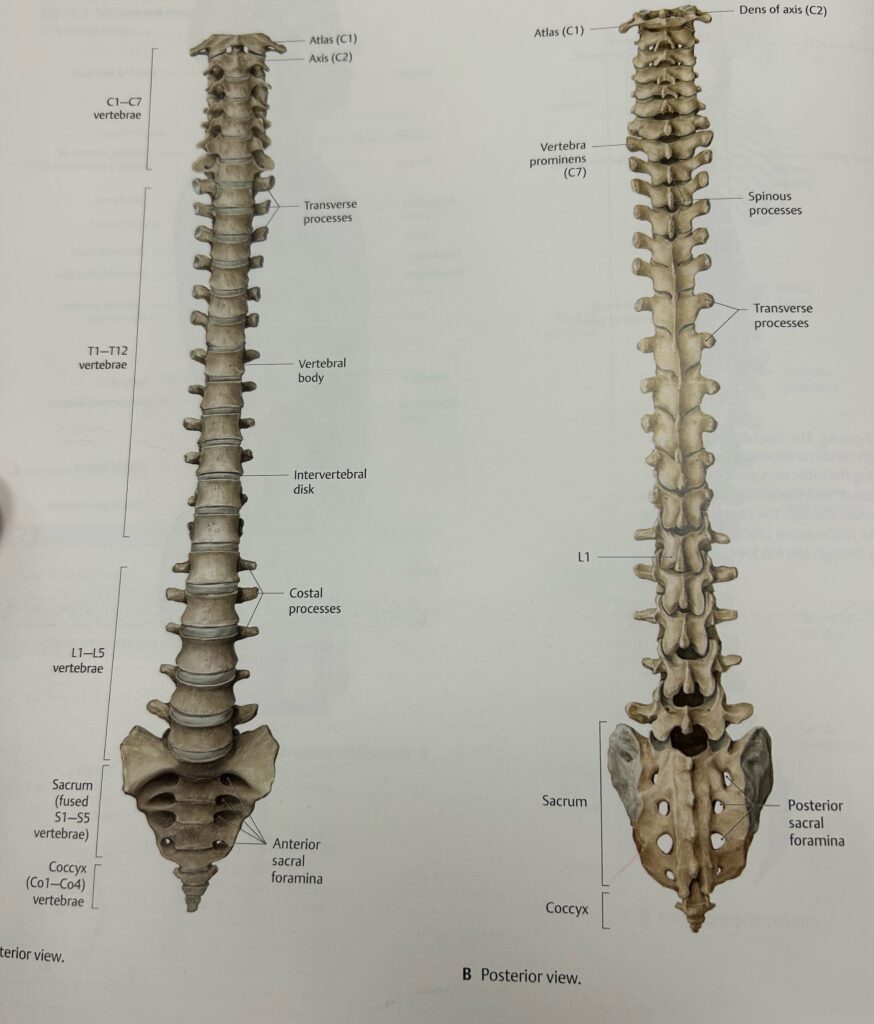
The cervical, thoracic, & lumbar spines can be viewed here.
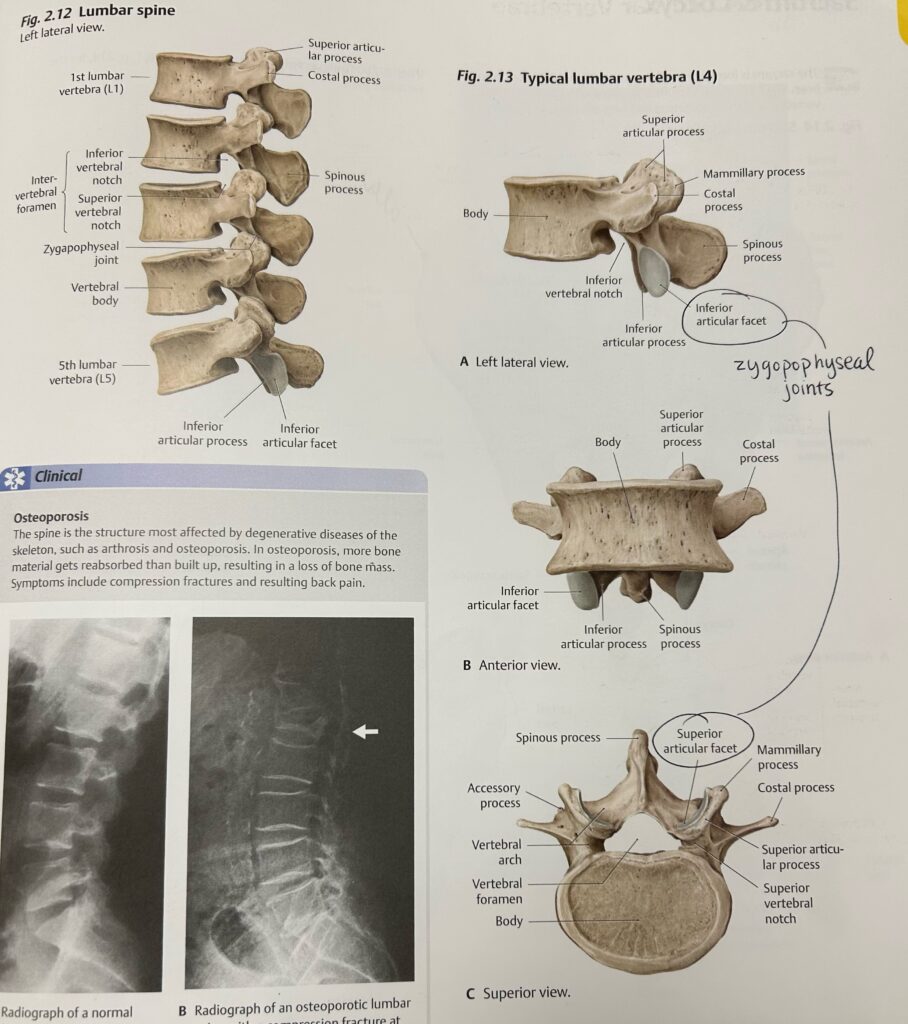
Here you can see the L1-5 vertebrae & some of parts of the bones labeled & circled here.
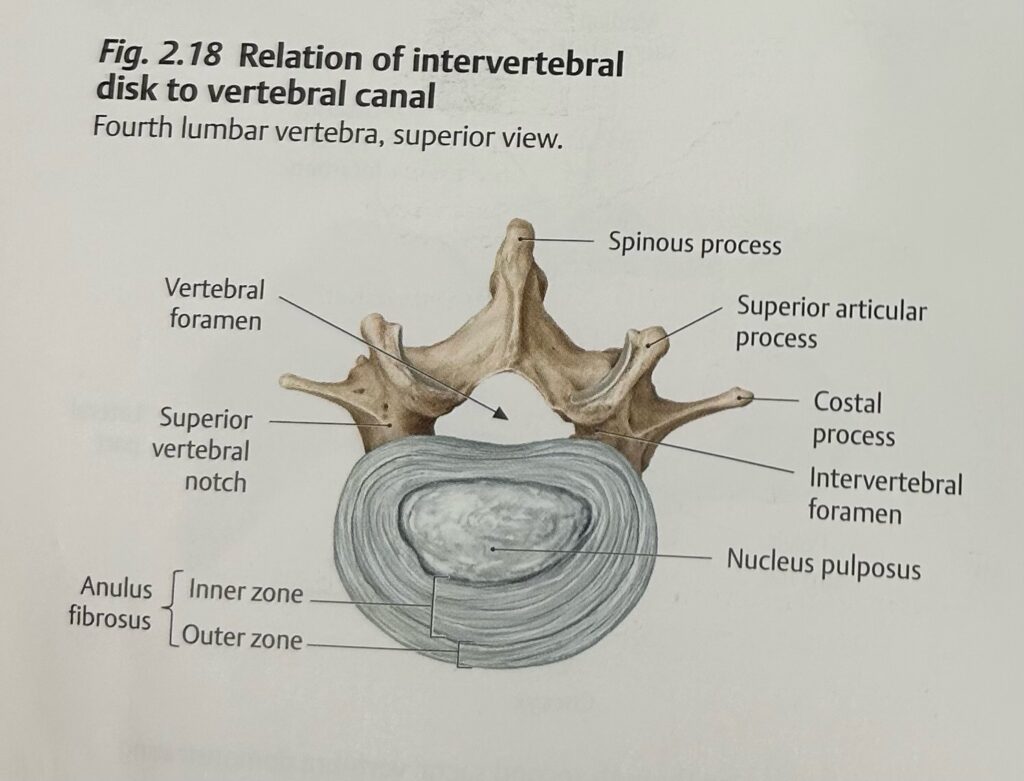
A close up view looking down on a vertebral bone & disc tissue.
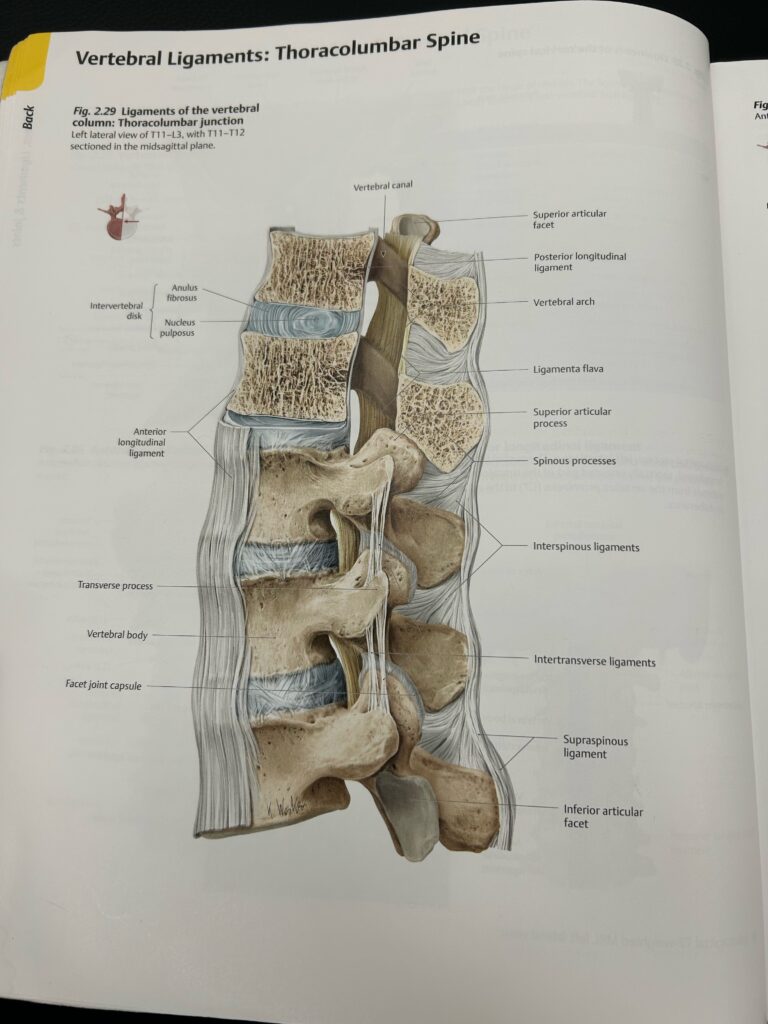
A glance from the side of the T11-L3 vertebrae with discs in between each vertebrae.
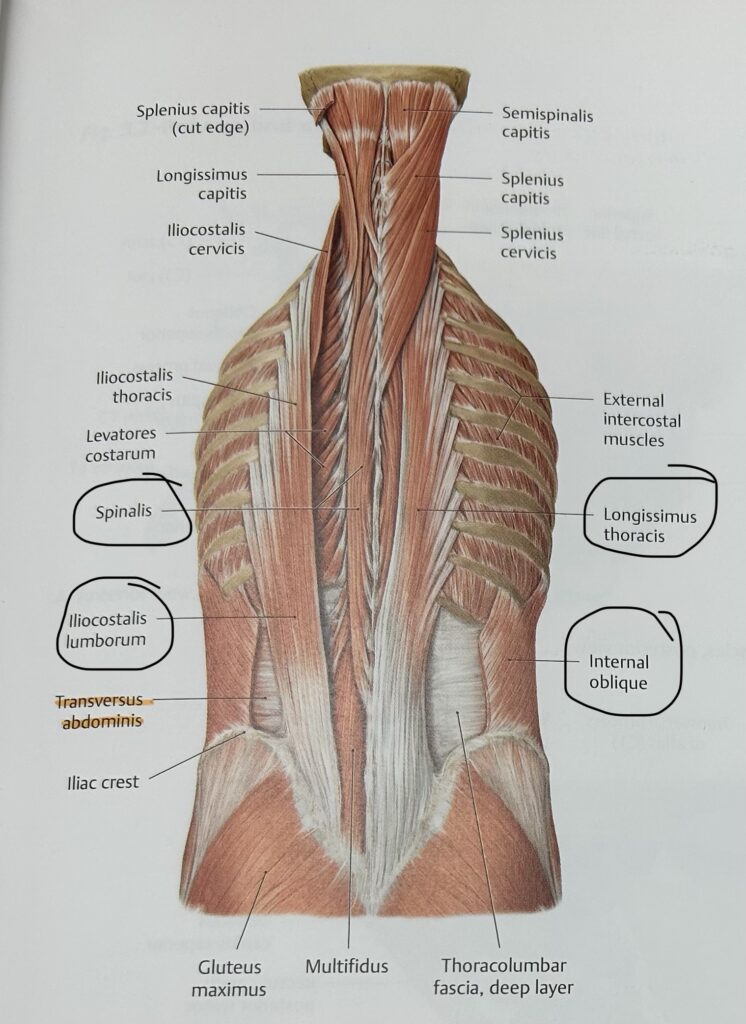
The individual paraspinal muscles are circled here.
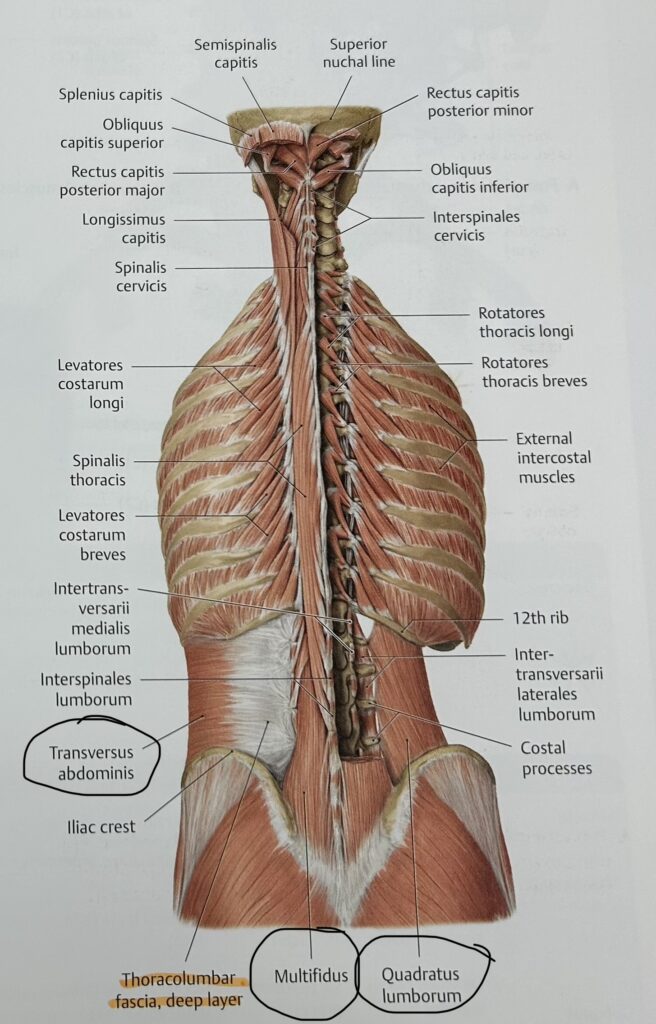
Some of the other muscles discussed above that can cause pain in the lumbar spine are circled here.
All this detail & intricacy is to protect & house your spinal cord and spinal nerves. The lumbar spine takes on the majority of the weight bearing and cushioning in the whole spine and therefore is most at risk to damage and injury.
The most common lumbar spine injuries in athletes and active people, in my experience, would be back extensor muscle tension, disc herniation, and fracture of the lumbar spine vertebrae. The extensors muscles of the lumbar spine include the quadratus lumborum, paraspinals, multifidus, obliques, and transversus abdominis. When these are weak or tight they can cause pain from spasming, sustaining muscle knots, or sustaining fascial tension (fascia being the encasing of the muscle & holds it and gives it shape). Usually patients with this injury have trouble in most positions and struggle to find a position of comfort. If they warm up they generally feel better, but when they’re cold or resting for a long period of time they can have increased pain. These injuries can come on with time, with a sudden accident of over rotation, bending, or extending at the spine, or lifting weight incorrectly.
Disc herniations are caused by the intervertebral discs spilling some of their contents into the spinal column where the spinal cord & spinal nerves are housed. This can cause nerve root compression which can cause pain radiating from the lumbar spine to the hips, pelvis, and various parts of the legs. Usually people have trouble sitting for long periods of time and bending forwards at the lumbar spine if they are suffering from this condition. This injury often occurs with sudden twisting injuries, lifting weight incorrectly, a blow to the back, or can occur over time with improper posture.
Lastly, and likely the most severe of these injuries, is a lumbar spine fracture. This can be of the vertebral body or of the laminae/vertebral arch connecting the facet joints between vertebrae. Both of these kinds of fractures can cause stiffness and pain in the lumbar spine and most people struggle to bend backward & walk/stand. This is most often caused by sudden trauma to the lumbar spine, but it can also occur over time with repeated stress or stress fracture.
All of these injuries can be treated by conservative means including physical therapy where we advise on stretches, core & hip strengthening, balance training, return to sport exercise like plyometrics, agility, resistance training, and cardiovascular endurance, progressing activity as tolerated, massage, myofascial release, cupping, & scraping massage or ASTYM (a tool assisted massage where a smooth metal tool is rubbed across lotioned skin to relax muscle & bring fresh blood flow to a tight area). See some exercises to try below to get you started on your path to recovery to address these different conditions.
URGENT: If you are worried you may have suffered a lumbar spine fracture, please see an orthopedic doctor to be advised on next steps for treatment before trying some of the exercise treatment listed in this blog!
Lumbar Spine Muscle Tension
Disc Herniation
Lumbar Spine Fracture (don’t try these until you’ve consulted an orthopedic doctor & gotten an xray)
lumbar-fxDownload
Anti-inflammatory use, ice for inflammation for the fracture and disc herniation injuries, heat for the muscle tension to help relax the bring fresh blood flow to the lumbar spine muscles, walking, elliptical, or biking as tolerated for light cardiovascular exercise, and not pushing through mild pain with any activity can be helpful as well. Chiropractors may be beneficial 3-6 months after these injuries to help with stiffness and pain after being advised by a medical professional, such as a physical therapist, after these injuries occur. It is helpful to consult an orthopedic physician if you are having high pain that isn’t subsiding with these tips or you are feeling intense & shooting pain down both legs.
We at Inside Track Physical Therapy & Wellness hope this information helps you manage your pain and advises you in recovery. Lumbar spine conditions can be very difficult to self-manage as they vary greatly and can be very painful in different ways that don’t always follow the “norm.” If you feel you need more advice on rehab of an injury, prevention of an injury, or maintenance, we suggest giving us a call or schedule a time to talk to one of our licensed doctors of physical therapy by clicking the “Inquire Here” button below. Our therapists can advise you on next steps that are best for you to help you fully return to sport and maintaining an active lifestyle.
If you want to be active, but are in pain, we can help!
References
1. Mortazavi J, Zebardast J, Mirzashahi B. Low back pain in athletes. Asian Journal of Sports Medicine. 2015;6(2). doi: 10.5812/asjsm.6(2)2015.24718.
2. Schuenke M, Schulte E, Schumacher U. Atlas of Anatomy. 2nd ed. (Gilroy AM, MacPherson BR, Ross LM, eds.). New York, NY: Thieme Medical Publishers, Inc; 2012.
3. Trompeter K, Fett D, Platen P. Prevalence of back pain in sports: A systematic review of the literature. Sports Medicine. 2016;47(6):1183-1207. doi: 10.1007/s40279-016-0645-3.

